Remarks by Vitor Gaspar at the launch of “How Large are Global Energy Subsidies?”
May 18, 2015
May 18, 2015
Slide 1
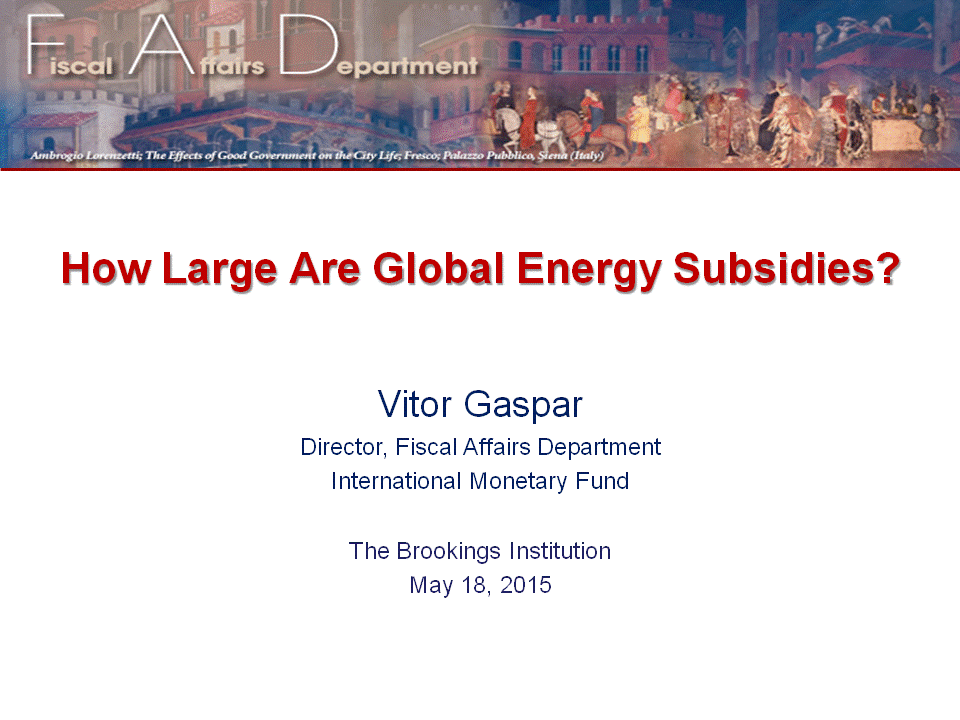
Many thanks to Brookings for hosting this event. Special thanks to David.
And thanks to you all for your interest and participation.
Today I will present our updated estimates of global energy subsidies.
Slide 2
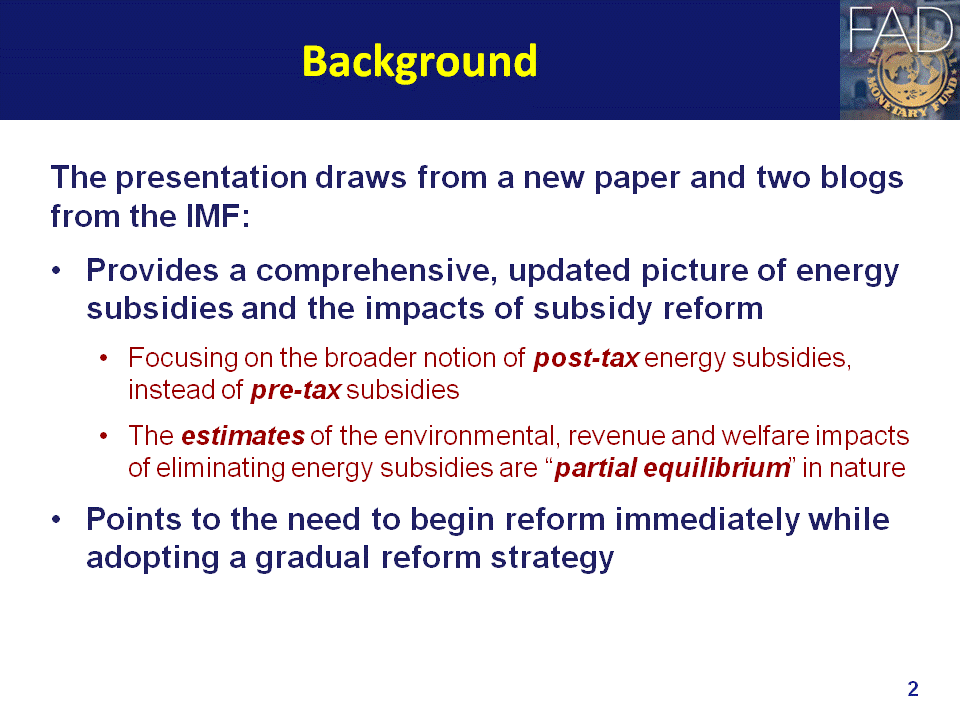
The presentation draws on a new IMF Working Paper.
It builds on quite a lot of work done recently at the IMF.
We published two books, one in 2013 entitled Energy Subsidy Reform, and a second in 2014 entitled Getting Energy Prices Right. The methodology is presented in a 2014 journal article in Economics of Energy and Environmental Policy.
The size of energy subsidies crucially depends on how they are defined. Our focus here is on a broad notion. Our energy subsidies estimates capture three elements: (1) the failure to recover the cost of supplying energy; (2) the failure to fully charge for the environmental damage from energy consumption; and (3) the failure to tax energy consumption in the same way as other consumption goods.
This broad notion of energy subsidies captures the policy relevant question of: what is the right level of energy prices?
The paper also provides estimates of the environmental, fiscal and welfare impacts of eliminating energy subsidies.
Our findings should be interpreted with caution.
These estimates are approximations based on a “partial equilibrium” analysis.
That is because cross-price demand effects between different energy products are not taken into account (“partial equilibrium” analysis). Moreover, the assumption is made that supply costs are fixed–and, hence, the approach focuses only on demand. The approach could be called “partial-partial equilibrium.”
Finally, other second-round adjustment or dynamic effects are similarly ignored.
However, sensitivity analysis indicates that the results are qualitatively robust. This allows us to safely conclude that energy subsidies are very large and that their reform will generate substantial benefits.
Slide 3
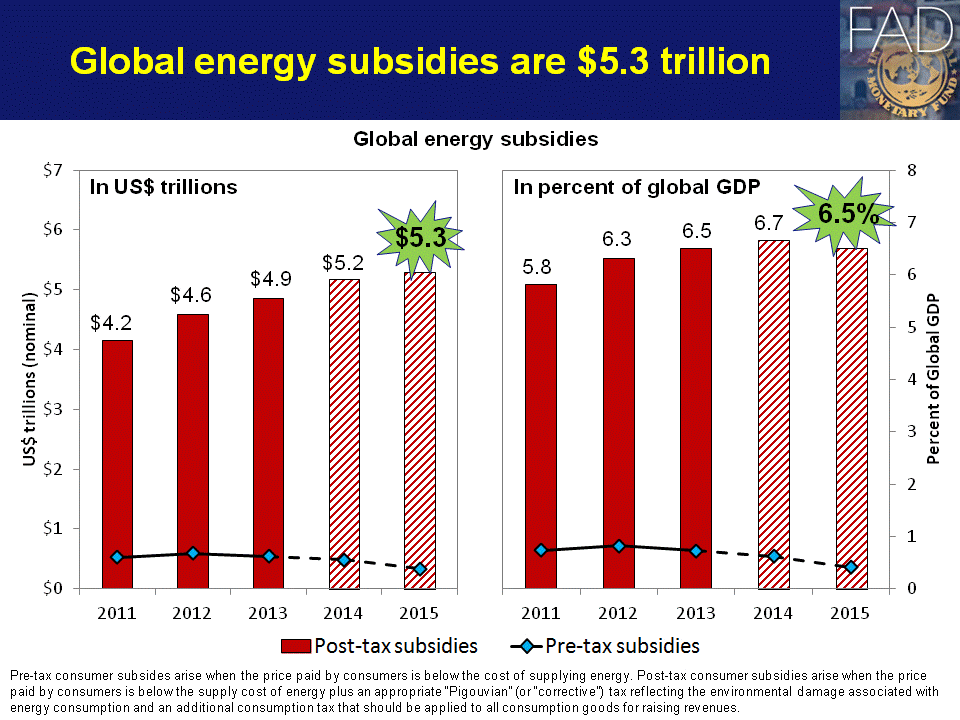
We find that energy subsidies are big and rising.
Global energy subsidies increased from US$4.2 trillion in 2011 to US$5.3 trillion in 2015. In percent of GDP, global energy subsidies are estimated to increase from 5.8 percent of global GDP in 2011 to 6.5 percent in 2015.
These numbers are shocking.
They exceed global public health spending, estimated by the World Health Organization at US$4.3 trillion in 2013. It is one of the largest negative externalities ever estimated.
Slide 4
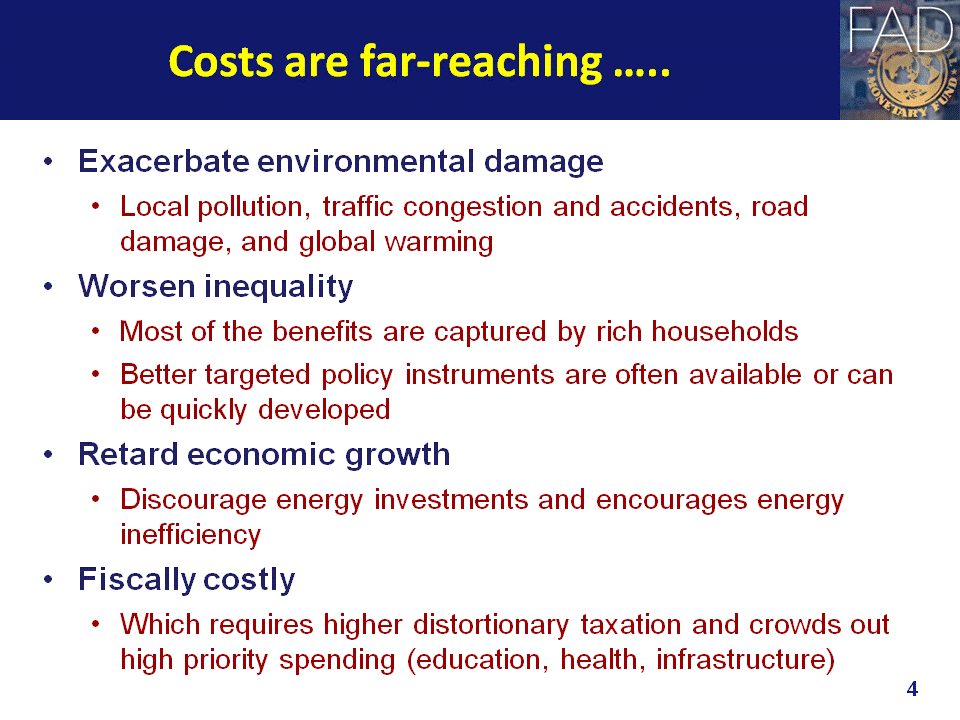
Energy subsidies have been shown to have various adverse effects.
Energy subsidies exacerbate environmental damage. This includes local pollution, traffic congestion and accidents, road damage and global warming.
Energy subsidies benefits are mostly captured by rich households. There are better ways to help the poor.
Energy subsidies penalize growth. For example, they distort energy sector investment and encourage overconsumption of energy.
Finally, energy subsidies are fiscally costly. Financing energy subsidies requires higher distortionary taxation or crowding out of potentially productive public spending such as in education, health and infrastructure.
Slide 5
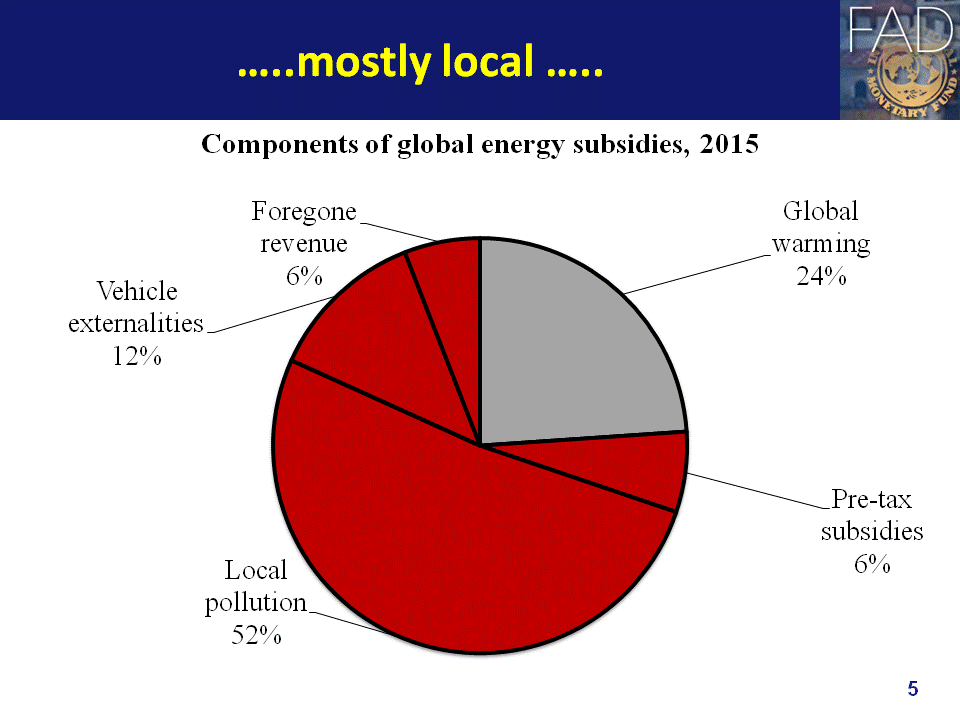
This slide shows the share of the various components in global subsidies in 2015.
Less than a quarter of the global energy subsidies can be attributed to global warming. 75% reflects local factors.
Slide 6
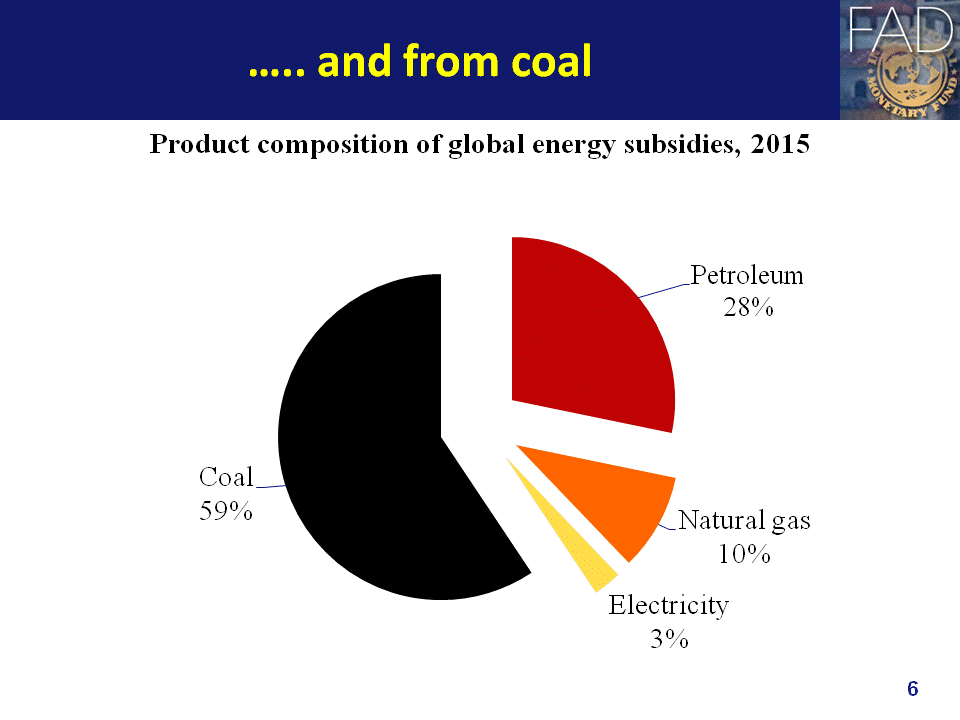
This slide shows the share of global subsidies attributable to each energy product in 2015.
Most subsidies are from coal. Coal is the dirtiest fuel and thus has the largest environmental damage. Ironically, coal is also one of the fuels that have been rarely taxed in any country.
Slide 7
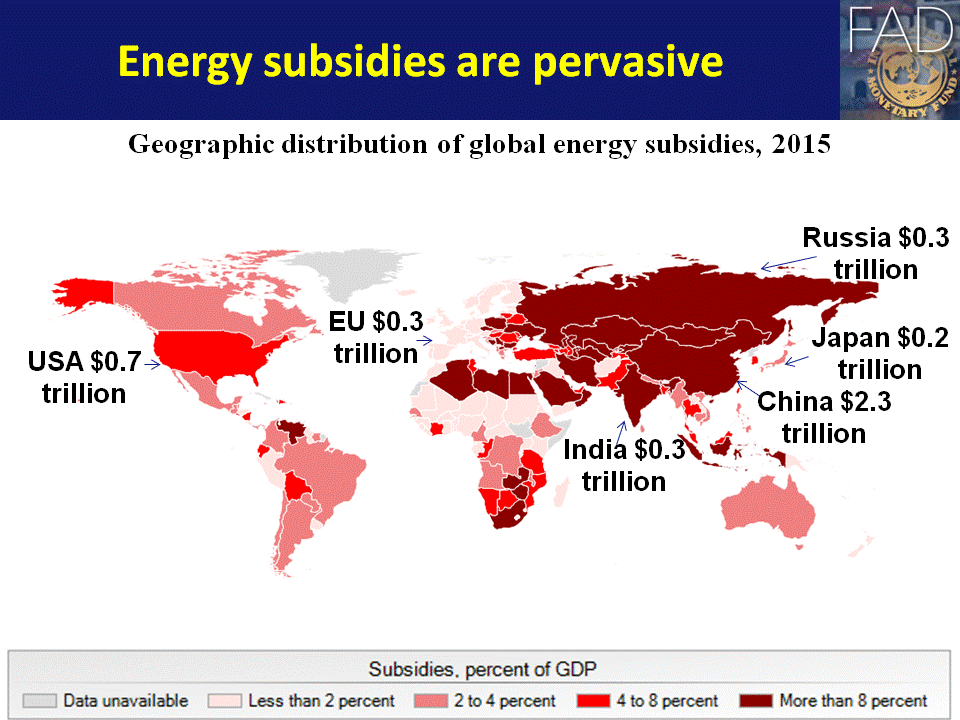
This slide shows the geographic distribution of global energy subsidies in 2015.
Energy subsidies are sizable in nearly all countries. Regional averages are all above two percent of GDP. In percent of GDP, energy subsidies are highest in Emerging and Developing Asia and Commonwealth of Independent States, both at over 15 percent of regional GDP. This is largely because of their high use of coal and high population exposure to coal’s emissions.
In dollar terms, Emerging and Developing Asia accounts for about half of global energy subsidies. Advanced economies account for a quarter. The top five subsidizers are China, United States, India, Russia, and Japan. Subsidies for the European Union are similar to those of India.
Slide 8
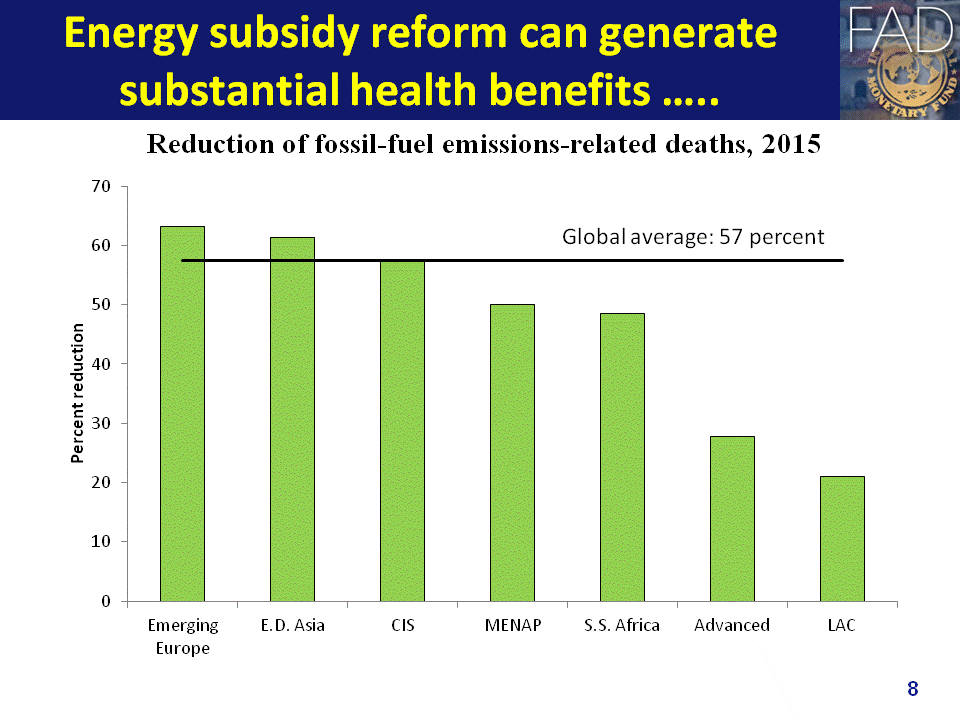
Eliminating energy subsidies can generate substantial environmental, fiscal and welfare benefits. For example, it could reduce fossil-fuel emission-related death by over 50 percent on average.
Slide 9
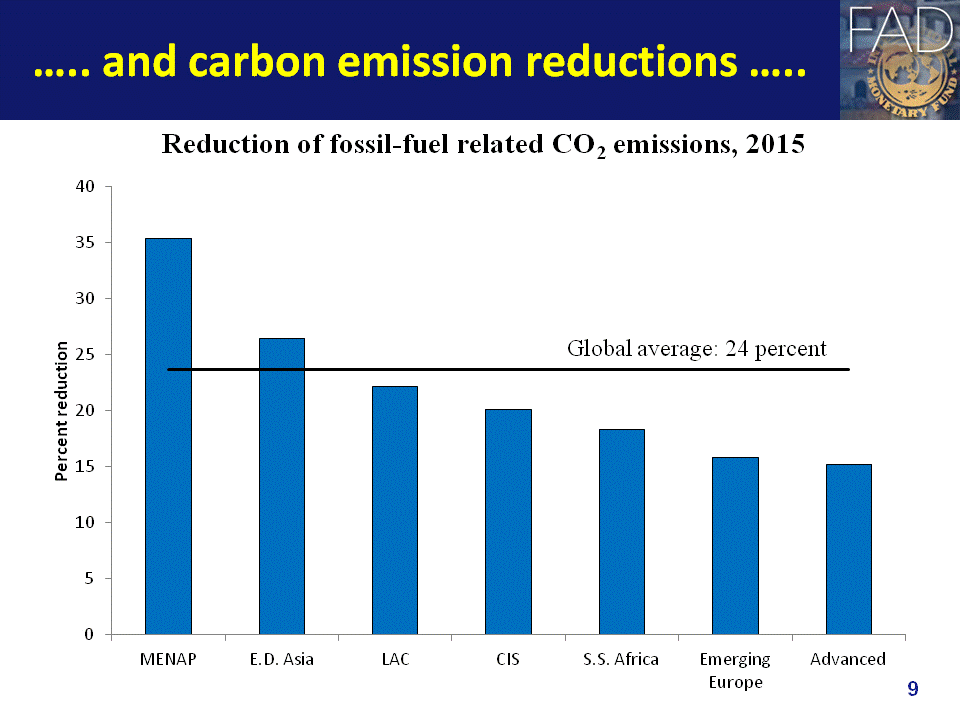
Eliminating energy subsidies can also lower global carbon dioxide emissions by over 20 percent. Reform would lead to large increases in petroleum prices and, in the case of coal, the deployment of emissions control technologies.
Again the percent reduction in CO2 emissions varies significantly across regions. The Middle East and North Africa and Pakistan (MENAP) would have the largest reduction.
Slide 10
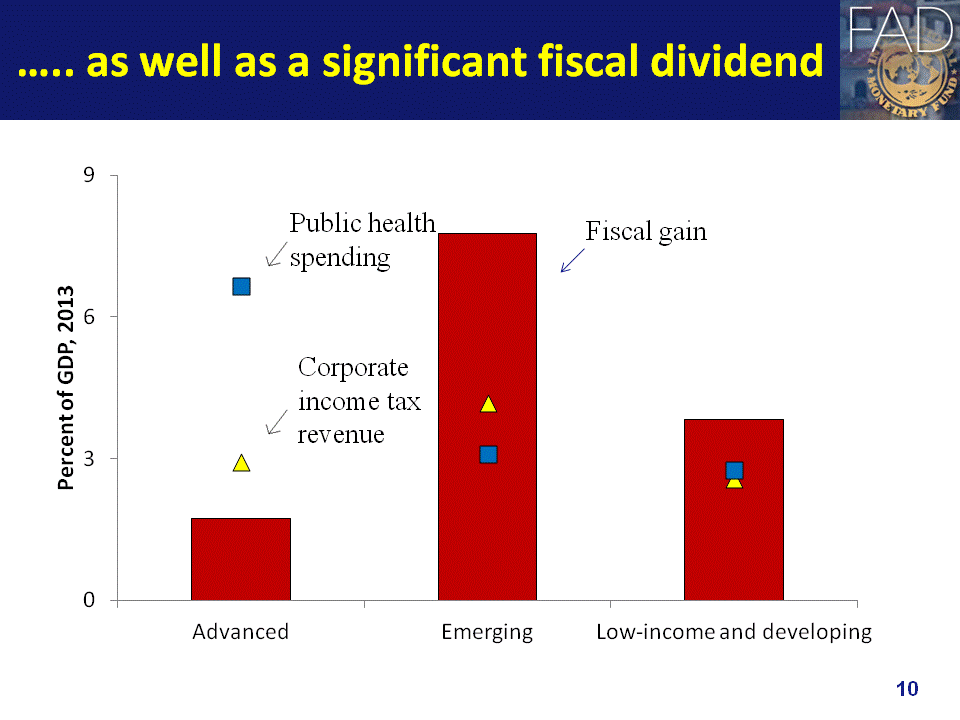
The fiscal gain from energy subsidy reform is smaller than the subsidy estimate, at US$3.0 trillion in 2013 and US$2.9 trillion in 2015. This corresponds to 4 percent of global GDP in 2013 and 3.6 percent of global GDP in 2015. This is because firms and households would cut their energy consumption and adopt emissions control technologies if energy prices were to be raised.
This chart compares this estimated fiscal gain with corporate income tax and public health spending, for 2013. The chart speaks for itself.
Slide 11
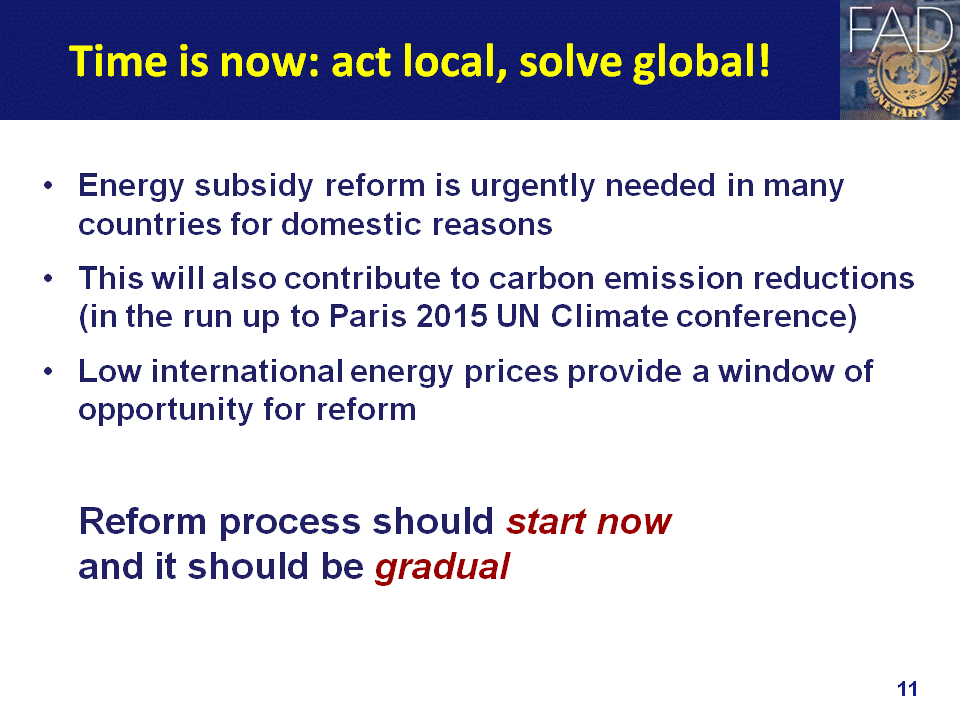
To summarize, energy subsidies are high and reforms are urgently needed.
But the reform would also contribute to global carbon emissions reduction. In particular, it would help countries in meeting their pledges of carbon reductions ahead of the Paris 2015 UN climate conference.
Global energy prices have dropped significantly. That provides a window of opportunity for reform. Countries should act now. It is important to stress that there are many reasons why policy action should be gradual: act now but act in the right way.
In our estimates most energy subsidies come from damage imposed locally on people. By acting in their own self-interest, countries, regions and cities would be contributing to the solution of a major global challenge. Nevertheless, coordination and cooperation at the global level remains fundamental.
Hence the conclusion: Act Local, Solve Global.
Slide 12
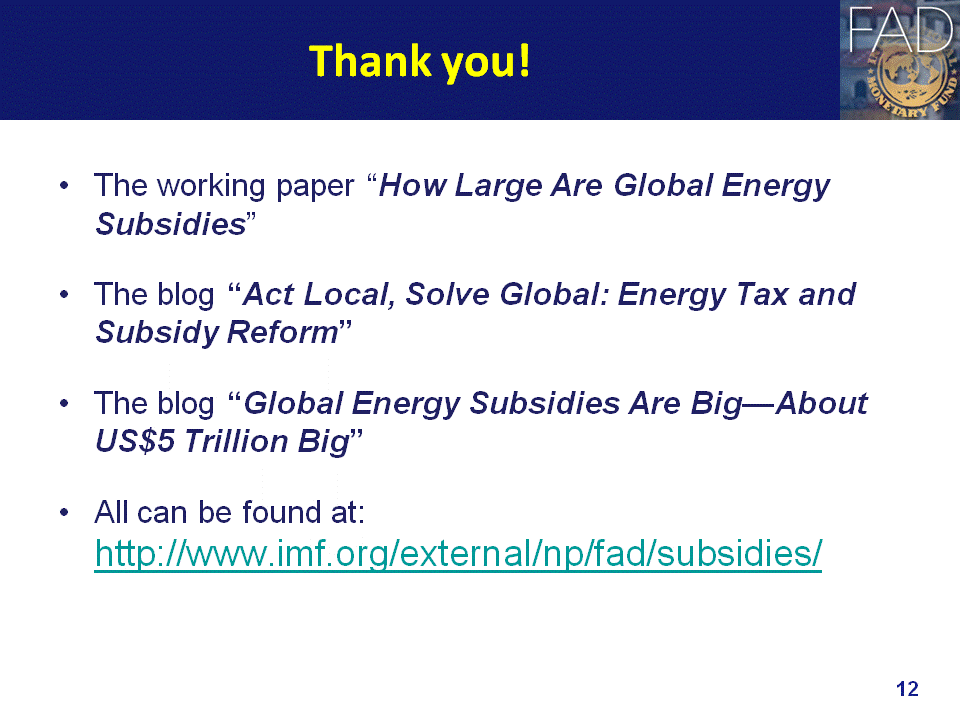
IMF COMMUNICATIONS DEPARTMENT
| Public Affairs | Media Relations | |||
|---|---|---|---|---|
| E-mail: | publicaffairs@imf.org | E-mail: | media@imf.org | |
| Fax: | 202-623-6220 | Phone: | 202-623-7100 | |


